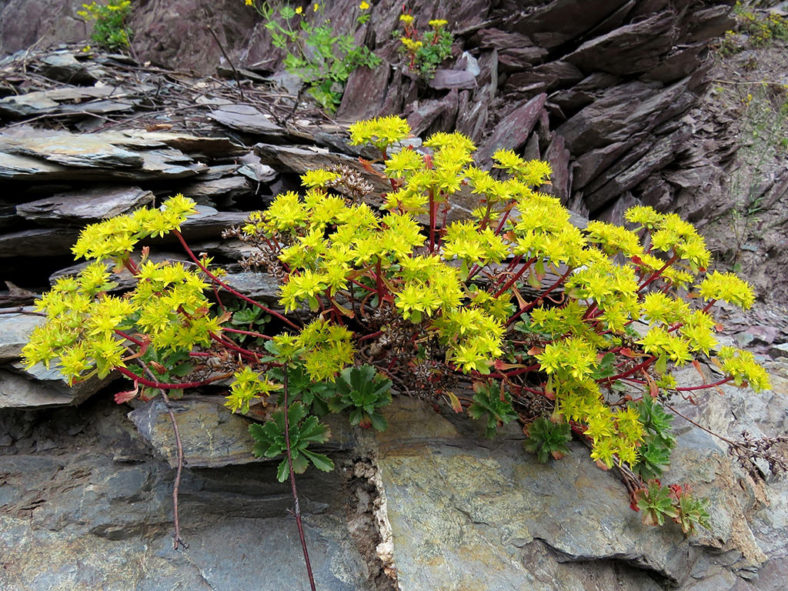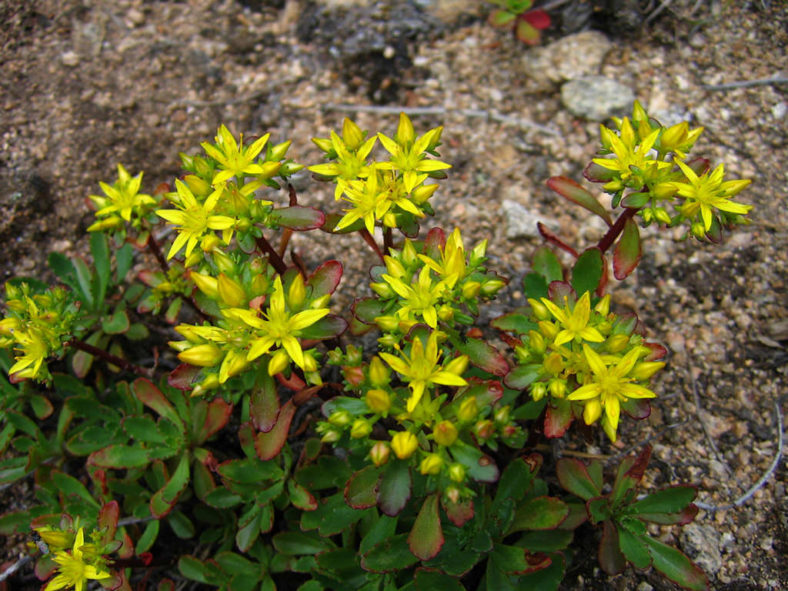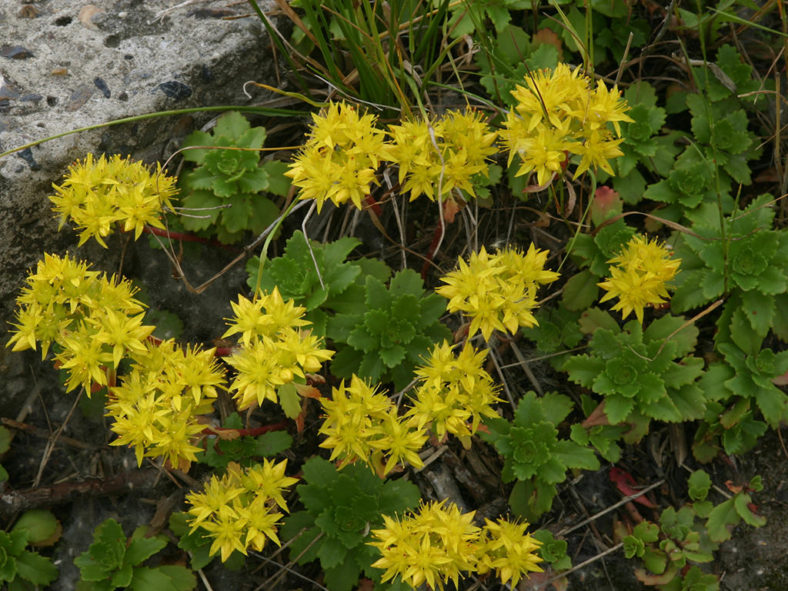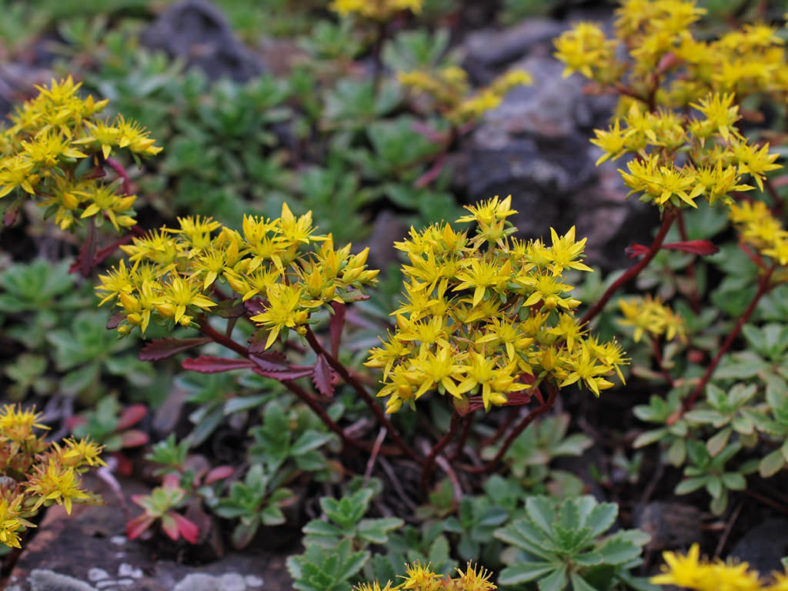Scientific Name
Phedimus hybridus (L.) 't Hart
Common Name(s)
Hybrid Stonecrop, Siberian Stonecrop
Synonym(s)
Aizopsis hybrida, Aizopsis pseudohybrida, Anacampseros hybrida, Phedimus pseudohybridus, Sedum hybridum, Sedum pseudohybridum
Scientific Classification
Family: Crassulaceae
Subfamily: Sempervivoideae
Tribe: Umbiliceae
Genus: Phedimus
Etymology
The specific epithet "hybridus (hy-BRID-us)" means "hybrid; mixed" and refers to the original description of the species probably based on cultivated material.
Origin
This species is native to Russia (eastern and central Siberia to the southern and central Ural Mountains) and Central Asia and is widely naturalized in northern Europe. It grows in stony and gravelly soils and rock crevices, mainly in mountain steppes.
Description
Phedimus hybridus, formerly known as Sedum hybridum, is a succulent plant with thick, woody rootstock and profusely branching stems. The sterile shoots are short, decumbent, and with crowded leaves at the tip. The leaves are green, reddish towards the tip, and inversely egg- to spatula-shaped with an obtusely serrate margin in the apical half. They can measure up to 2 inches (5 cm) long and 0.8 inches (2 cm) wide. The flowering branches are ascending, with smaller, more remote leaves, and can grow up to 12 inches (30 cm) long.
The flowers are star-shaped with golden yellow petals and orange anthers and appear in summer in dense clusters.

How to Grow and Care for Phedimus hybridus
Light: This light-loving plant tolerates partial shade but prefers full sun and grows best in warmer environments. Plant P. hybridus in an area of your garden that gets at least 6 hours of sunlight a day.
Soil: This succulent thrives in any well-drained soil. Good drainage is critical for preventing root rot or fungal diseases.
Hardiness: P. hybridus tolerates frost and can stay outdoors when the temperature drops below freezing. It can withstand temperatures as low as -40 to 30 °F (-40 to -1.1 °C), USDA hardiness zones 3a to 9b.
Watering: The best way to water your P. hybridus is to use the "soak and dry" method. Get the soil completely wet, and then wait until the soil is dry before watering again.
Fertilizing: Feed with low-balanced fertilizer to keep your plant happy and healthy. Use a diluted dose of half the strength recommended on the package.
Repotting: Repot your plant when it outgrows its current pot by moving it out to a larger container to hold the plant better. Spring is the best time to repot P. hybridus. Make sure the soil is dry before you begin the repotting process.
Propagation: Like all members of the genus Phedimus, this succulent can be grown from seeds, division, or stem cuttings. Dividing your P. hybridus is the best method to propagate because it is easy and usually very successful. Divide in spring when new shoots are seen. P. hybridus is also easily propagated from cuttings. Sow seeds in spring in well-drained soil in a sunny position.
Learn more at How to Grow and Care for Phedimus.
Toxicity of Phedimus hybridus
P. hybridus can be mildly toxic to humans and animals.
Links
- Back to genus Phedimus
- Succupedia: Browse succulents by Scientific Name, Common Name, Genus, Family, USDA Hardiness Zone, Origin, or cacti by Genus
Photo Gallery
Click on a photo to see a larger version.


